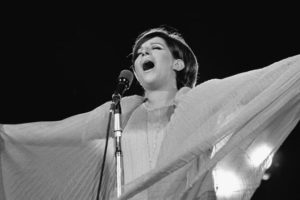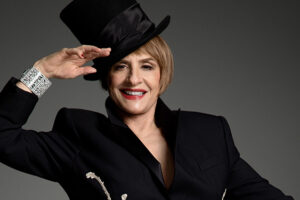
Other than binging on seven or eight Agatha Christie novels in seventh grade, I can’t recall ever again reading another mystery novel, or what they now call “crime fiction.” Perhaps it’s a coincidence but around that same age I attended my first opera and began subscribing to Opera News. Hence, Commissario Guido Brunetti, hero of twenty highly successful crime novels set in Venice, rang no bells for me until I discovered he was the creation of Donna Leon, better known to me as a rabid fan of the operas of George Frideric Handel.
That enthusiasm has resulted in her newest book, Handel’s Bestiary: In Search of Animals in Handel’s Operas, published in Germany last year and now in the US by Atlantic Monthly Press and in the UK by William Heinemann.
This odd volume, featuring color illustrations by Michael Sowa plus a CD containing over an hour of music, attempts a new spin on the medieval bestiary, a literary compendium of essays about animals—real and imaginary—reflecting on their so-called innate behaviors, usually for the purpose of moral instruction. Leon, born in New Jersey but for many years an English professor in Italy, is served well by her academic background in evoking bestiaries’ enormous influence on the arts since the Middle Ages.
While Leon thoroughly investigates the most common archetypes of the twelve animals she’s chosen, she’s particularly pithy on the often hilarious discrepancies between visual images found in the bestiaries and the actual physical appearances of the creatures, explaining that elephants, for example, often looked “like large, tusked wolves with lion paws.” Oddly, however, one learns much more about medieval beliefs than about Handel.
My first experience with Leon and Handel came via a 2002 CD called “La Maga Abbandonata (The Abandoned Sorceress)” featuring music from Amadigi, Rinaldo and Alcina sung by Simone Kermes and Maite Beaumont. Leon and conductor Alan Curtis jointly conceived the program and the CD’s final track presents Leon reading from “Acqui Alta,” a Commissario Brunetti novel (there’s also an ad for her Swiss publisher on the inside back cover of the CD booklet).
In the years since, Leon has become so involved with Curtis’s orchestra Il Complesso Barocco that recent recordings credit her as “supporting producer.” The orchestra has recently presented “Handel’s Bestiary” as a series of concert-lectures in Spain and Germany. Last week Leon even gave an introduction before the performance of Ariodante in Baden-Baden.
Despite this intense interest, Leon is no musicologist—she wears her enthusiasm lightly. Each chapter in “Handel’s Bestiary” focuses much more on the animal’s symbology than on its importance to Handel’s music. Baroque operas typically abound in “simile arias”: a character comments on his or her situation by comparing it to a ship, a battle, an animal and so forth. In one of the arias studied, Theodora, a Christian, has been imprisoned by the Romans for her beliefs and sings,
O that I on wings could rise,
Swiftly sailing through the skies,
As skims the turtle dove!
That I might rest,
for ever blest,
with harmony and love.
From my own quick, unscientific scan of some Handel libretti, it seems there’s about a 50-50 split between arias that directly address the dramatic situation: “I will revenge the wrong done to me/I love you but I can’t tell you that I do”, etc.; and “simile arias” (Cleopatra’s “Da tempeste” from Giulio Cesare or Ariodante’s “Dopo notte” are familiar ones.) Unfortunately, Leon only briefly touches on the connection between the animal and its musical-dramatic context—rarely is even a third of each chapter devoted specifically to Handel.
Done in a style more appropriate to children’s books, the twelve illustrations (one per chapter) by German artist Michael Sowa strike me as labored whimsy, rarely illuminating to the text they accompany. For example, the “frogs” illustration shows a stage where an army of frogs advances on a comically frightened prima donna while musicians in powdered wigs pipe away in the pit. Leon’s text, on the other hand, examines the devastating plague of frogs that attack in Israel in Egypt. Perhaps Sowa was chosen since he had already published his own bestiary Sowa’s Ark in the 1990s. Frankly, incorporating reproductions from medieval bestiaries would have been much more illuminating.
But I suspect the CD that accompanies the book will prove the real attraction for most. Given the wealth of material available—every Handel opera seems to contain numerous “animal arias,” Leon and Curtis have mostly stayed off the beaten path choosing rarely heard arias from Arianna in Creta, Deidamia, and Partenope. However, the subtitle proves to be misleading when a third of the pieces come from oratorios, not operas!
Eleven of the twelve selections were recorded specially for this venture. The twelfth comes from Curtis’s excellent recent Berenice although the aria (about a bee), sung by tenor Anicio Zorzi Giustiniani, is much more appealing performed by soprano Gemma Bertagnolli on George Petrou’s spectacularly good new recording of Handel’s self-pasticcio Alessandro Severo.
Except for another tenor aria (elephant) from Judas Maccabaeus, Karina Gauvin and Ann Hallenberg divide the remaining ten pieces. Although Gauvin, a French-Canadian soprano often performs on this continent, North American audiences sadly have had no opportunity to hear the great Swedish mezzo in recent years. While in Berlin in 2002 I heard Handel’s Hercules at the Konzerthaus; Gauvin, whom I’d heard in New York, was the Iole but the English mezzo scheduled for Dejanira cancelled and was replaced by Hallenberg whom I had never heard of. She was spectacular, and I have avidly sought out her broadcasts and recordings ever since. Both Gauvin and Hallenberg often sing with Il Complesso Barocco, starring in Curtis’s recent very fine Tolomeo, as well as his disappointingly limp Ezio.
One of the delights of this CD is the inclusion of several “alternate arias” that Handel wrote for revivals of his works. When singers arrived to sing roles they hadn’t created, Handel would often compose entirely new music to suit his or her particular talents.
Though there are many of these arias, they are rarely performed, although Ian Bostridge’s newest CD includes an aria Handel wrote for a tenor Sesto in Giulio Cesare. A swaggeringly florid piece about a stag, written for the title character in Ottone three years after its premiere, is Hallenberg’s showpiece—her seamlessly warm voice effortlessly surmounting every hurdle. On the other hand, Hallenberg also sings the most familiar arias, Sesto’s from Giulio Cesare and Ruggiero’s from Alcina, as well as the “frog” piece from Israel in Egypt.
For me, however, Gauvin shines brightest. She suavely chirps Deidamia’s aria about a nightingale and charmingly lectures how not to flutter like a moth, a sentiment from Partenope, one of Handel’s most appealing heroines. Her previously unrecorded aria—for me, the highlight of the CD— the bewitching “Io son qual fenice” (phoenix) was written for a revival of Admeto and became the only aria ever sung by both Faustina Bordoni and Francesca Cuzzoni. Throughout, her musicality and superb technique (what gorgeous trills she possesses!) are a joy. Instead of the expected fireworks, the CD ends with a deliciously languid duet from Floridante for two lovers longing to be like turtle doves.
It pains me to point out how staggeringly unhelpful this project’s design is. The CD sleeve identifies the singers and selections they sing only by the names of the animals! To discover the name of the opera, the character singing, etc., one must flip to the relevant chapter or check the list at the back of the book. Also, even though the text could have easily fit into a book of fewer than 100 pages, it has been extravagantly (and wastefully) stretched to over 140.
Yet, for all its ups and downs, Handel’s Bestiary provides an entrancing opportunity to brush up on bestiaries but mostly to hear two of today’s most superb Handel singers performing some rare and wonderful music.
























Comments